Pocket Knives
Pocket knives are versatile and essential tools that combine functionality and design to adapt to various needs. From everyday uses to specific tasks, they stand out for their portability, strength and precision.
Their history and evolution reflect a mix of tradition and technology, giving rise to models that vary in materials, sizes and mechanisms. Whether for outdoor activities, detailed work or as collector's items, pocket knives represent a practical and reliable choice.
Here you will find answers to questions about types of pocket knives, classification, nomenclatures and others that fit your expectations, guaranteeing quality and durability in each model.
The Albacete Knife represents one of the most significant treasures of artisanal tradition in Spain. This object not only stands out for its functionality and artistic details but also as a testament to a rich history and technological evolution that has maintained its relevance over the centuries.
A Brief Historical Look
Originating in Albacete, this knife evolved as a response to various functional, social, and cultural needs. From its beginnings as a rustic tool to becoming a symbol of luxury ornamentation and collectible craftsmanship, its artisanal essence has remained intact.
The Models of the Albacete Knife
There are various knife models, each designed with specific characteristics catering to both practical uses and aesthetic considerations. Below are some of the most representative ones:
Fieles Knife
- Characteristics: The first model of the Albacete knife. Lacks a locking system; the blade is secured to the handle through a pin known as "el fiel."
- Use: Basic and practical tool of its time.
Originating in the 17th century, the vela dagger is an iconic variant of the left-hand daggers used in Spanish fencing. Designed to enhance the protection of the hand, this dagger complemented the rapier, characteristic of the renowned close-combat style of that era.
Origin and Description of the Vela Dagger
The evolution of the vela dagger was a response to the desire to maximize the fencer's defense without sacrificing effectiveness. A metal piece was introduced that completely covered the left hand. This innovation allowed the fencer to focus on combat technique without worrying too much about sustaining injuries to the hand. It bears several names, such as misericordia, quitapenas, or daga de caridad, reflecting its broad cultural acceptance and versatility in combat.
Features and Design
- Length: The length of the vela dagger generally ranged from 40 to 60 cm, making it suitable for close combat during the Renaissance.
- Decorative Design: With a distinct baroque style, these daggers exemplified "horror vacui," or fear of empty spaces. They featured intricate engravings on their sails, shells, and leaves, often with plant motifs, mottos in Latin or Spanish, and family names.
- Functionality: Equipped with broad handguards, they were specifically designed to intercept and trap enemy blades, allowing for both cutting and thrusting effectively.
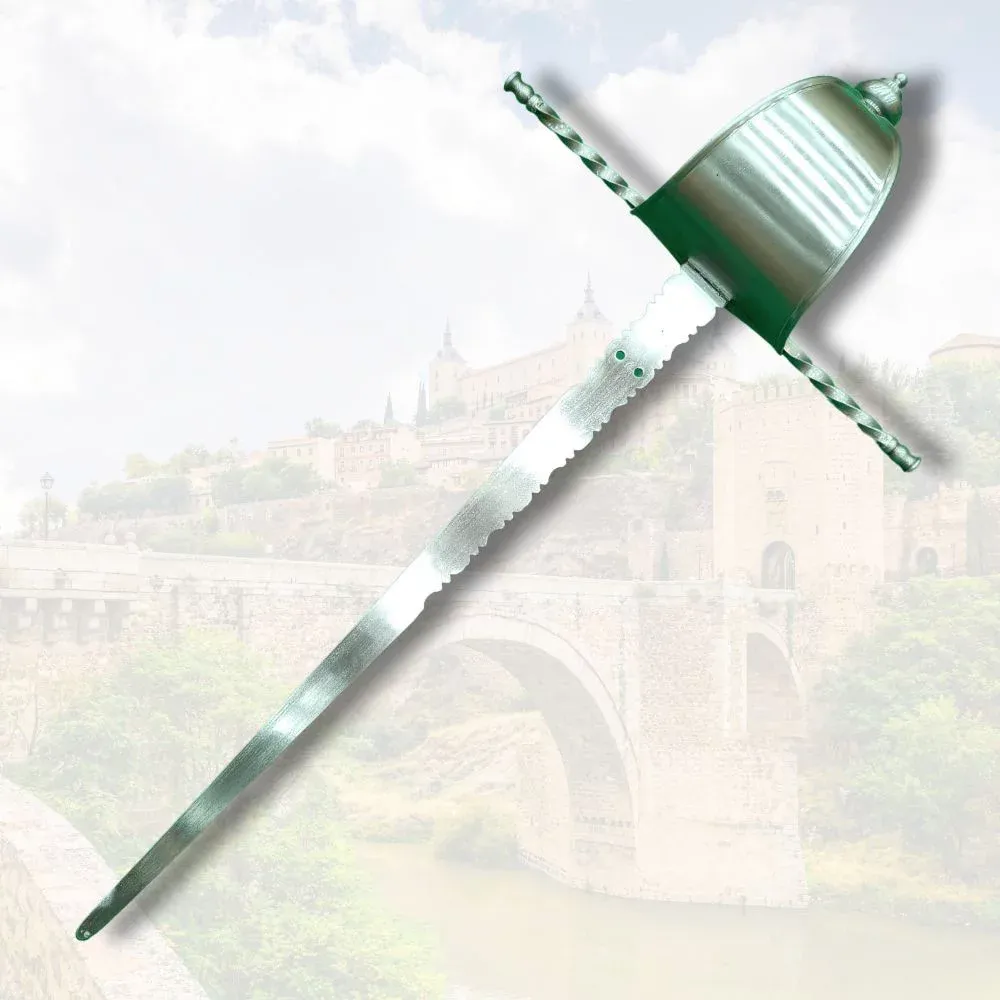
Historical Use in Spanish Fencing
The vela dagger was crucial in Spanish fencing, combining with the rapier and other weapons like the vizcaína to form a formidable combat system. In the military context, especially among soldiers of the Tercios, it was as essential as their richly adorned swords. Soldiers typically carried the dagger at their waist, at kidney height, ready for any unexpected threat.
Cultural Significance
Beyond its martial use, the vela dagger endured as a symbol of status and skill. Its rich decoration and slender design not only reflected the fencer's prowess but also the wealth and social background of the bearer. These weapons were both a means of defense and a cultural emblem of a time of splendor in fencing technique and art.
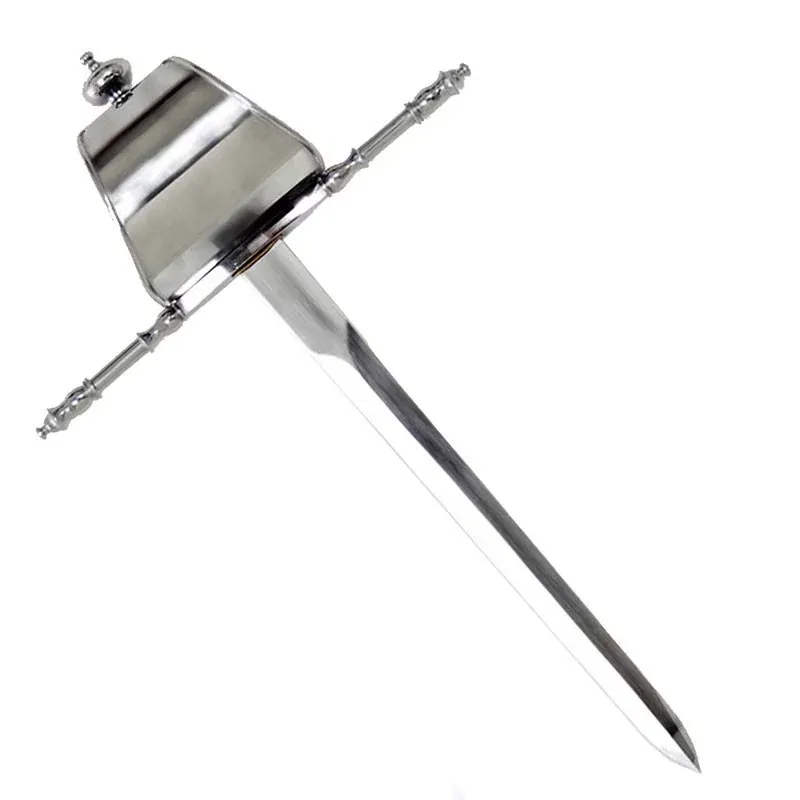
Conclusions
The vela dagger is a masterpiece of metallurgy and Renaissance fencing. Serving not only as a tool for combat but also as an expression of elaborate ornamentation and advanced technique, it represents an essential part of the history of Spanish fencing. Its sophisticated design and multifaceted functionality keep it as a fascinating subject of study for both historians and enthusiasts of combat techniques.
The center of gravity (CG) of a bladed weapon is a crucial concept for understanding its handling and efficient use in combat. This term refers to the point at which the weights of the weapon are balanced, directly influencing its balance, stability, and, therefore, its performance when used or thrown.
Importance of the Center of Gravity in Bladed Weapons
The balance of a bladed weapon, generated by its center of gravity, determines how it will behave when handled or thrown. A proper balance not only facilitates maneuverability but also confers precision and stability. Understanding this concept allows users, whether warriors or craftsmen, to optimize the design and use of weapons to maximize their effectiveness.
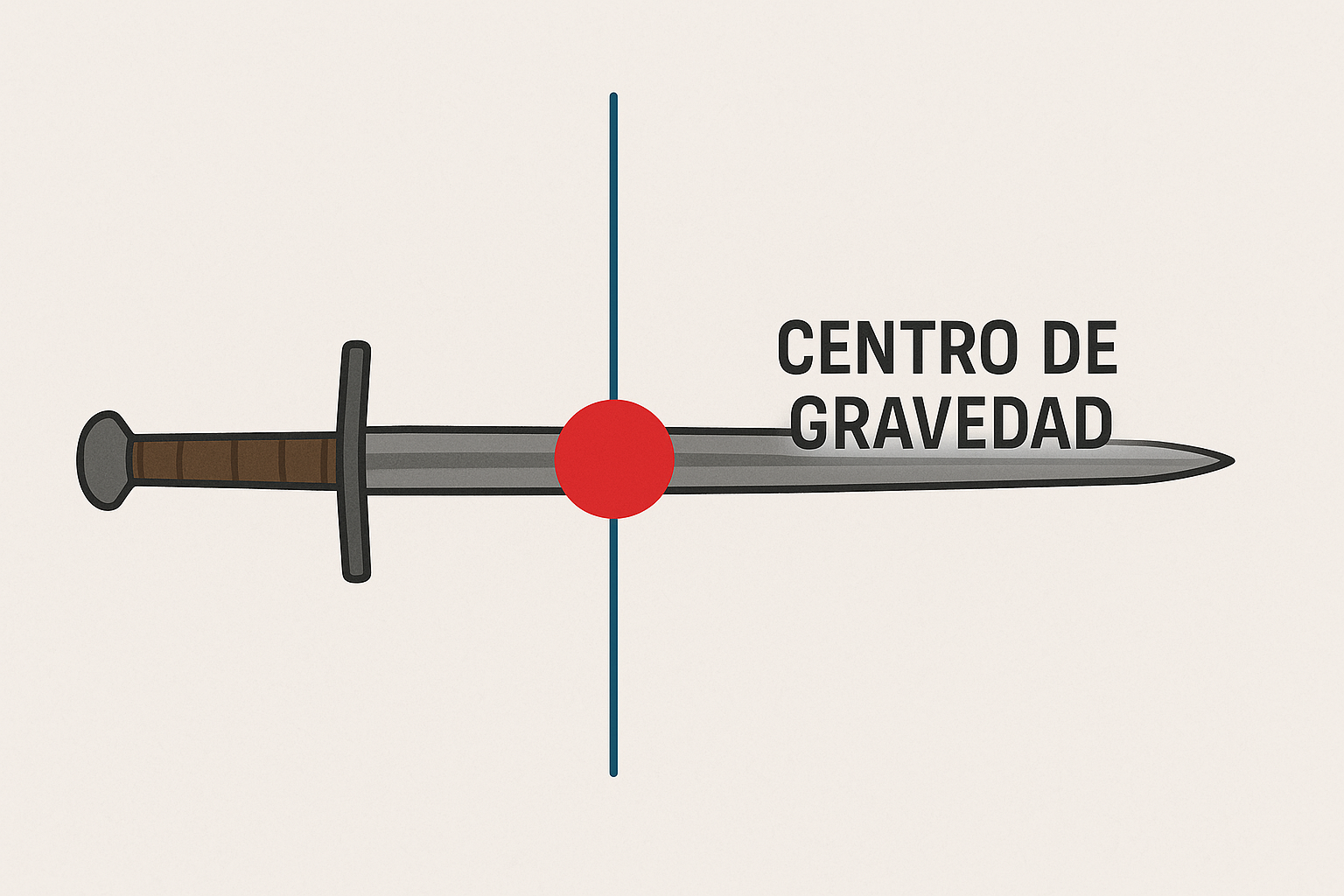
Center of Mass and Balance of Swords and Knives
The center of mass (CM) directly influences the balance of weapons such as swords and knives. The CM, located near the handle, makes the weapon easier to manipulate for striking. If the CM is close to the blade, the balance varies, making it more effective for cuts and slashes, but potentially hindering other types of strikes.
The Challenge of a Poorly Balanced Sword
Manipulating a sword with poor balance can result in ineffective use. The uncertain behavior when striking and the greater physical demand on the user can lead to quick exhaustion and inaccurate blows, endangering both the user and their attempts to execute precise strikes.
Comparison of Swords According to Center of Gravity
- Centered towards the blade: Ideal for cuts and slashes, as its balance allows for quick and precise movements.
- Centered towards the handle: Offers better control in sword strikes, allowing for greater precision and handling.
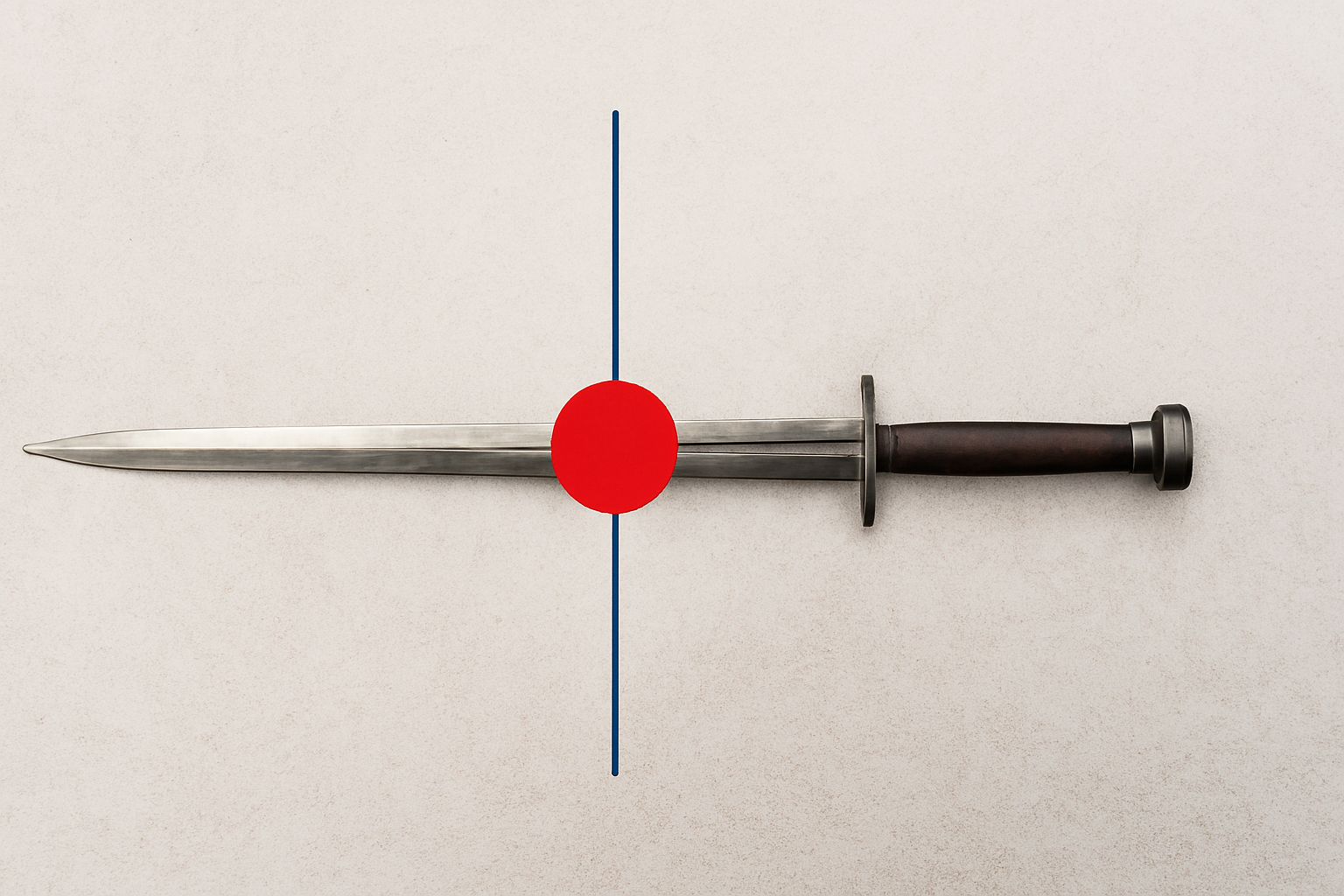
Influence of Centering on Knife Throwing
Throwing a knife requires a well-distributed CG to ensure stable and accurate flight. A CG close to the center of the knife is ideal, as it allows for a straight and controlled throw. If the CG is improperly distributed, the knife may deviate during flight, negatively affecting accuracy.
Adjustability of the Center of Gravity in Handmade Weapons
Handmade bladed weapons allow customization of the CG. By selecting materials and adjusting the weight distribution, craftsmen can design bespoke weapons that meet the specific needs of the user, optimizing the balance and control of the weapon for specific combat situations.
Bladed Weapons and the Need for a Well-Defined Center of Gravity
- Throwing knives: A centered CG improves flight accuracy, crucial for hitting the target.
- Swords and Sabres: A well-placed CG maximizes effectiveness in cuts, ensuring effective strikes.
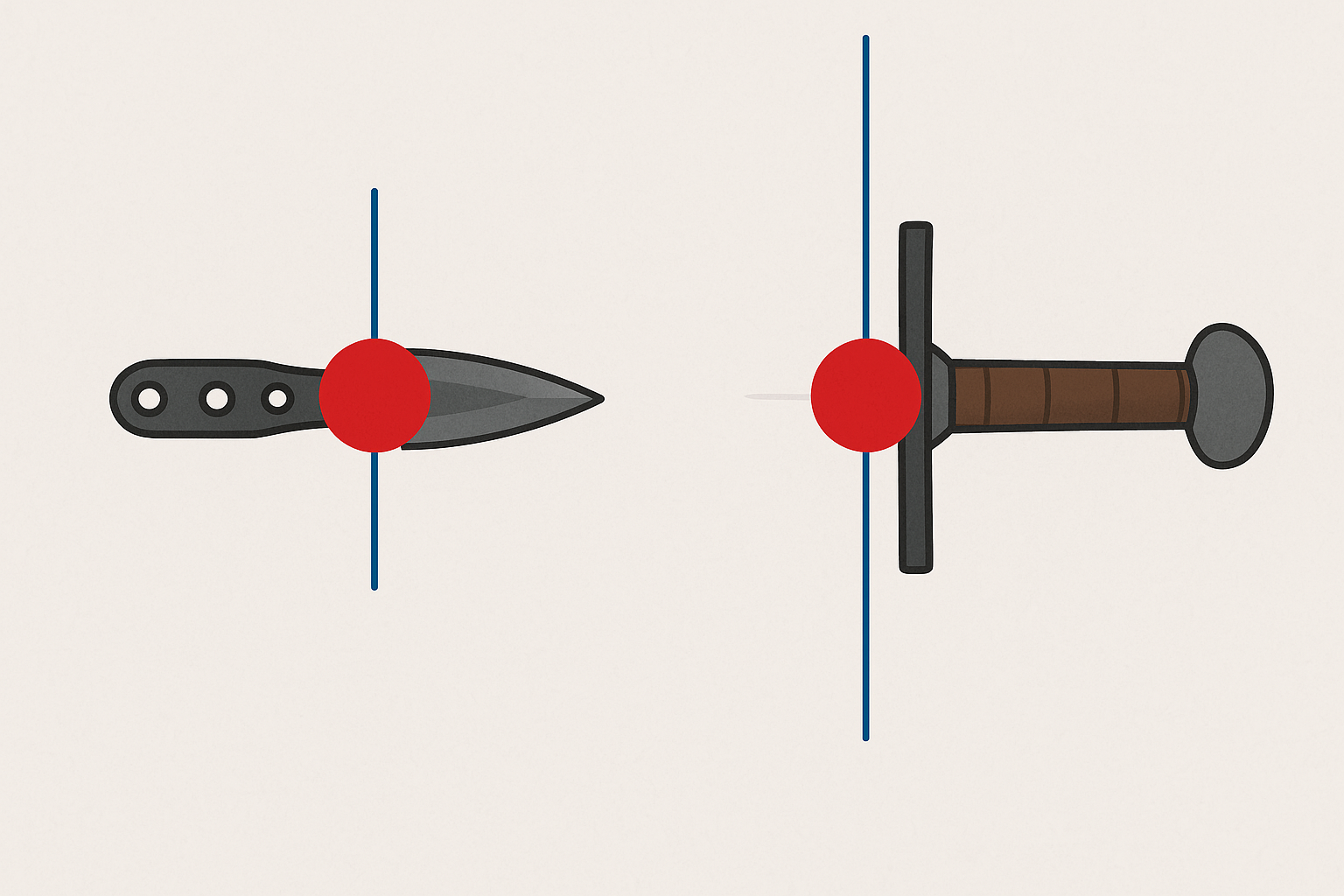
Understanding the CG in bladed weapons is essential not only for manufacturers and craftsmen but also for users, as a deep knowledge enables them to make the most of the weapon’s capabilities in combat. Customized adjustments are an added advantage of handmade weapons.




























